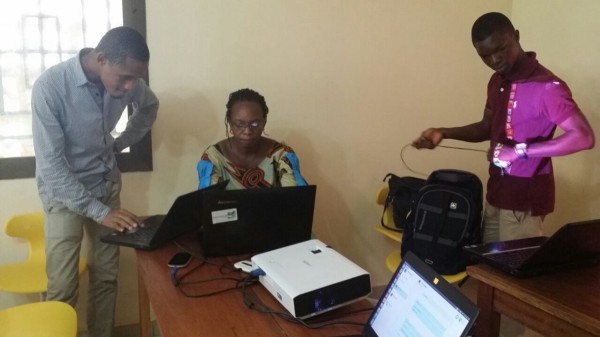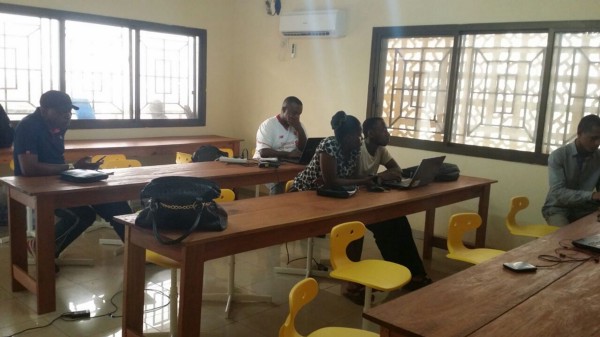Digital Innovation Is Difficult - Lessons from Sierra Leone
This post was original published on the Code for Africa Medium Publication, under a Creative Commons CC-BY-SA 4.0 License

After the excitement and dust of launching your country’s first civic technology initiative settles, the challenges that come with actually building a digital democracy can be daunting.
It’s now a couple of (dare I say, slightly scary?) months since Sierra Leone’s first ever d|Bootcamp, where five teams of volunteer hacktivists won seed funding and technical support to build prototypes that tackle everything from the severe health challenges that shorten the lives of local citizens, to ways to make our parliament more accountable, and ways to keep people safe during the regular floods that hit the capital, Freetown.
After the initial euphoria subsided, we slowly became aware of just how complex the task at hand is: coming up with great ideas to ‘change the world’ isn’t that difficult. Transforming those ideas into working prototypes that actually have real-world impact, in just six months, is daunting anywhere, nevermind in post-conflict economies like Sierra Leone where ‘net access and paying the rent is a daily challenge. The bitter reality is that even when the initial idea has been exhaustively mapped out, and teams are heroic in their efforts, sacrificing evenings and weekends to build their dreams, it is incredibly difficult to keep all the moving pieces in place. It is therefore with immense pride (and with some level of relief too!) that we’re happy to announce that not only have we completed the initial ideation and mockup design phase with our 5 project teams, but have also had fruitful discussions with partner implementation organisations.


This is what we’re learned so far:
It has been a rollercoaster learning curve for everyone involved, from the teams to the mentors. Here are our key insights so far:
Keeping all community members involved and active is way more challenging than it might seem . This point might appear as a very basic truism, but it is an important one to keep in mind while starting off a civic tech community. The sustainability of any long term, community driven solution depends on how resilient the community members are, how keen they are to take on challenging roles and whether or not they get perturbed by institutional inertia that often bogs down such projects.
To ensure that a civic community flourishes over the long-term, it is essential to keep all members occupied and interested in the work that the teams are going. Quite often, we tend to focus on the bottom line and on how effectively the project is moving ahead, often ignoring the more silent members of the community who need more encouragement and nudging. It is important to assign tasks to every community member based on their skill set and interests, while also ensuring that the more promising members are tasked with new and more challenging tasks to broaden their skills. Remember that your community’s long-term viability does not depend on how excellent your project is, but rather, on how skilled your community members are.
Think carefully about the tech stack that would be implemented for every project. It is important to understand and appreciate the challenging technological landscape that still exists in several countries where the pan African civic tech movement is spreading. Rather than getting disheartened with this reality, the community should embrace this challenge and vigorously test how well their chosen technical implementation would work in low latency environments. Also, it is not enough to simply look at solutions that have been implemented in other developing countries in South Asia or Latin America. Instead, more time should be spent on understanding the underlying reasons as to why particular tech solutions were chosen in their countries, and whether these reasons are true in the community’s home country or not. Finally, don’t jump on using the latest open source libraries that are being touted as The Solution ; more often than not, the most “primitive” tech solutions are the most effective ones for the project.
Partnerships are the key to your project’s success. Spend as much, if not more time on talking with organisations which are working on similar projects on the ground as you are spending on coding the actual project. It is important to realise that even the fanciest tech implementation of a project would be useless if it cannot gain traction with the intended users on the ground.
Your solution will not be “perfect”. Accept it. And finally, don’t expect your project to be an exact replica of the solution that was initially mapped out. The ground realities are very different from the ideas that are discussed and agreed upon from the comfort of the brainstorm rooms, and it is important to respect the challenges and conditions that exist on the ground. Also, instead on being fixated on making sure that your solution works, be open to the idea of heavily modifying your project’s functionalities. At the end of the day, the technical wizardry of the project does not matter, but how well the project solves a pressing problem facing the end users will determine its success.
Over the next two months, our plan is to get the bare bone tech structure of the projects up and running, after which we would be refining and testing the projects with live data until the end of February 2017.
But, before then, we will start sharing the first technical versions of the projects from Code for Sierra Leone, as well as discussing our rationale behind the technical stacks that we have chosen for each project.
In case of any queries, feel free to drop me a message. Cheers!

Leave a Comment